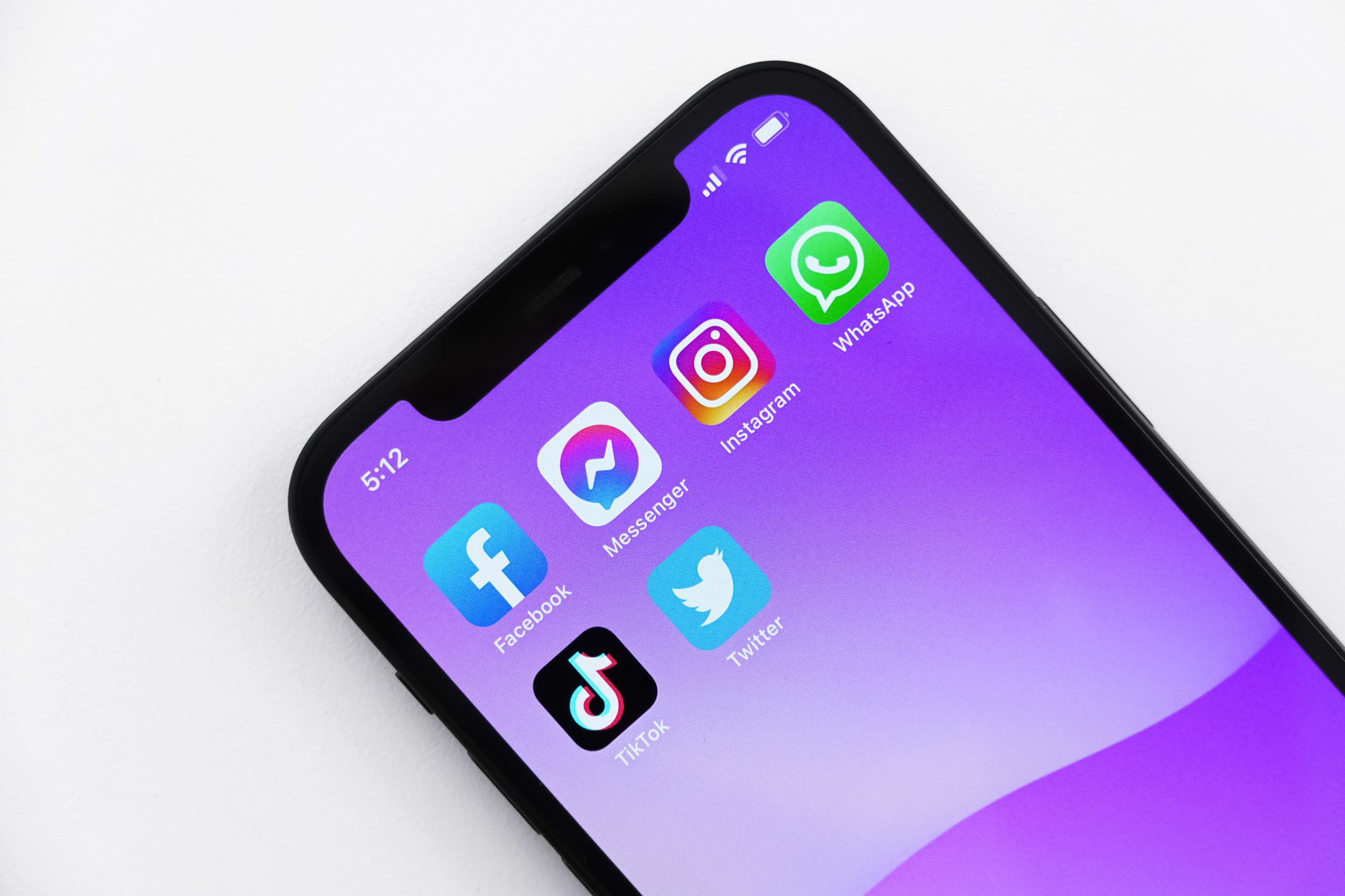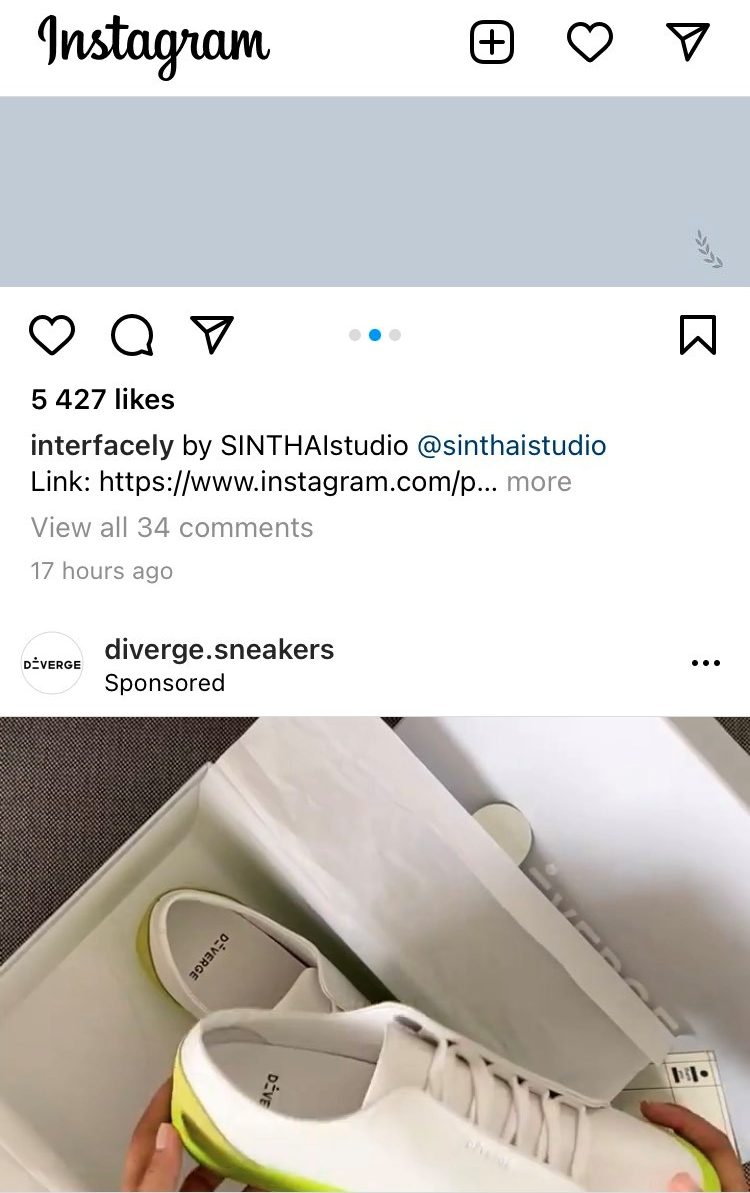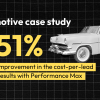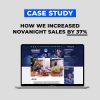
In 2025, we decided to revisit the topic of Facebook, Instagram, and YouTube viewability.
One of the most important aspects of our work as a digital agency is understanding the strengths and weaknesses of each platform and how they relate to our clients’ strategic objectives.
For example, the low viewability on Meta does not prevent us from running Facebook and Instagram campaigns, however, it does change how we plan brand awareness campaigns.
The industry definition of viewability is simple and straightforward. An display ad is considered viewable if 50% of its pixels are on screen for at least 1 second. For video, an ad is considered viewable if 50% of its pixels are on screen for 2 consecutive seconds.
We analyzed 377 154 870 impressions delivered across Facebook, Instagram, and YouTube to evaluate the viewability of each platform and placement. These ad impressions were generated by campaigns optimized for reach. We used Integral Ad Science to track, measure, and analyze the viewability performance of these campaigns.
Key insights from our 2025 viewability research:
- Facebook’s mobile feed performs better than Instagram’s mobile feed in terms of viewability – 46.60% vs. 31.93% respectively.
- Facebook reels achieved 7.84% viewability for display and 3.52% viewability for video ads. However, these results surpassed Instagram where video reels achieved just 1.63% viewability.
- Instagram stories managed to deliver just 6.81% viewability for display and 1.24% viewability for video ads.
- Although we need to acknowledge that in-stream vs. in-feed are fundamentally different environments, YouTube is the undisputed leader in terms of viewability for video with an overall viewability of 93%.
- Viewability is higher when ads are delivered in YouTube’s native application vs. in a browser – 94.49% vs. 91.62%
- The highest viewability on YouTube was achieved in Connected TVs. Overall, CTV achieved 98.22% viewability.
Facebook viewability benchmarks by placement and ad type
| Placement | Display | Video |
| Facebook desktop feed | 36.72% | 5.31% |
| Facebook mobile feed | 46.60% | 10.62% |
| Facebook reels | 3.52% | 7.84% |
| Facebook desktop instream | NA | 61.96% |
| Facebook Watch feed | NA | 4.73% |
| Facebook stories | NA | 2.86% |
| Facebook mobile instream video | NA | 27.43% |
Instagram viewability benchmarks by placement and ad type
| Placement | Display | Video |
| Instagram feed | 31.93% | 6.55% |
| Instagram reels | NA | 1.63% |
| Instagram stories | 6.81% | 1.24% |
| Instagram explore | 7.43% | 1.30% |
YouTube viewability benchmarks by video length and environment
| Video length | Browser | In-app |
| Aggregated | 91.62% | 94.49% |
| 6″ bumper | 91.48% | 93.71% |
| 15″ skippable | 90.66% | 95.10% |
YouTube viewability benchmarks by device and video length
| Device | Aggregate | 6″ bumper | 15″ skippable |
| Mobile | 94.19% | 93.49% | 94.75% |
| Desktop | 90.20% | 89.94% | 89.85% |
| Tablet | 95.67% | 94.68% | 96.21% |
| Connected TV | 98.22% | 97.91% | 98.50% |
—
Original article
Viewability on Facebook and Instagram have always been low, but when we analyzed over a billion ad impressions we learned that it’s worse than we thought. Essentially, only 11% of video ad impressions delivered in the newsfeed were viewable.
Agenda:
- Executive summary
- Introduction
- About the audit
- Viewability and engagement data for Facebook
- Display
- Video
- Viewability and engagement data for Instagram
- Display
- Video
- Viewability and engagement data for YouTube
- Viewability and engagement data for local AVOD publishers
- Conclusion
- About the author
- Additional sources
1.0 Executive summary
In 2021, we analyzed nearly half a billion ad impressions across Facebook and Instagram to determine the true cost of advertising on these two platforms.
What we discovered is that Facebook’s viewability is 50% for display (image-based) ads and 12% for video ads.
On Instagram, display ads had a viewability of 37% for display (image-based) ads and 11% for video ads.
To be considered viewable, 50% of an ad’s pixels must be in-view for at least 1 continuous second for display ads and 2 continuous seconds for video ads. This is the industry-established definition by the Media Rating Council (MRC) that is used by all independent 3rd party ad verification platforms.
Taking into account these viewability figures, the true cost of advertising is 100% to 900% higher than what advertisers and agencies see in their Facebook Ads Manager.
This report is an opportunity to start a conversation about the quality of advertising that is available on the market, not just on Facebook, so that both brands and agencies can make better decisions about their ad spend.
In mature digital markets the high cost of Facebook advertising creates the necessity to have a strong organic presence and to use influencers in order to reach new customers. Some brands prefer to use an in-house team to create and manage their content. However, most brand marketers chose to rely on outside help, even if the process of picking a marketing agency that specializes in content for Instagram or TikTok can be very daunting.
2.0 Introduction
Today, Facebook is one of the most important platforms for advertisers. With a global reach of over 2.6 billion users and a highly sophisticated targeting algorithm, it is no surprise why most brands and agencies rely heavily on Facebook.
In the US alone, Facebook accounts for roughly 25,2% of all digital ad spend, with Google taking home 28,9% [1]
However, there is one area where Facebook has disappointed for years both brands and agencies – transparency.
In 2019, Facebook agreed to pay a $40 million settlement to a group of advertisers who alleged that Facebook in 2015 through 2016 “knowingly inflated its video view metrics in order to attract more ad spend”. [2] [3]
In June 2020, Facebook announced that it would allow an audit by the Media Ratings Council (MRC).The audit is meant to determine whether Facebook complies with the new brand safety framework established in 2019 by the Global Alliance for Responsible Media (GARM),.
The goal of the framework is to standardize brand safety metrics across all social media platforms, including TikTok, Facebook, Twitter. For example, GARM wants all social platforms to adopt the same labels for different types of content violations (e.g. hate speech, bullying, etc). But even more crucial is the need for social media platforms to use the same data formatting when submitting their (self-reported) data to GARM and, perhaps, one day to the MRC.
However, recently Facebook backed out [4] because the data they currently report to GARM would become a component of the MRC audit but the standards have not yet been finalized. This miscommunication will undoubtedly delay the process by weeks if not months.
The reason why transparency matters is because businesses rely on Facebook to bring in customers. In a competitive economic environment brands deserve to know the quality of advertising they buy.
3.0 About the audit
Although there are many criticisms related to privacy and transparency that we can levy against Facebook, we need to applaud them for partnering with 3rd party verification platforms such as Integral Ad Science (IAS) and MOAT.
These partnerships have allowed advertisers to independently measure and evaluate the quality of their Facebook campaigns.
The following audit is based on agency data collected through MOAT and IAS. We measured campaigns delivered on Facebook and Instagram in Bulgaria between January 2019 and April 2021. The audit uses standard industry metrics and definitions developed by MRC.
MOAT and IAS are two of the biggest 3rd party ad verification software platforms in advertising. When advertisers one of these platforms they
The audit aggregates campaigns from eight advertisers. The scope of the audit covers Facebook and Instagram (newsfeed placement only) and includes both video and display formats. The data covers multiple optimization objectives with the exception of objectives relevant to e-commerce.
To provide more context and relevant benchmarks, this audit also includes viewability data for YouTube and local AVOD/OLV platforms.
The audit is only the first step in a long-term commitment by IAB Bulgaria to share resources that help both brands and agencies make better informed decisions about their advertising spend and priorities.
A full list of metrics and definitions can be found in the Appendix. However, for the purposes of this document we will focus on several key metrics:
- In-view rate – Percentage of impressions where at least 50% of an ad was In-View for at least 1 continuous second for Display ads and 2 continuous seconds for Video. If the ad is as large or larger in area than 970×250 (eg. 300×1050 or 970×418), then it only needs to have 30% of its area In-View.
- Valid and viewable impressions – the number of valid impressions that were viewable under the MRC standard (50% of pixels in-view for at least 1 continuous second for display and 2 continuous seconds for video).
- 50% On-screen impressions – the number of impressions where the ad surface was at least 50% on-screen for any period of time. For ads that are 242,500 square pixels or more, the ad only needs to have 30% of its area on-screen.
- 1 Sec Fully (100%) On-Screen Impressions – number of impressions where the ad surface was 100% on-screen for at least 1 second continuously.
- On-Screen Time – the average number of seconds in which at least one pixel of the ad was on-screen.
- Total On-Screen Time – The total amount of time in hours in which at least one pixel of the ad was on-screen.
- In-View Time – The length of time an ad has been active and In-View.

This video ad is considered valid and viewable if at least 50% of its pixels are in-view for 2 continuous seconds.
If the ad is viewed by a human user for fewer than 2 continuous seconds, it will not be considered valid and viewable, which is the primary metric used to evaluate viewability across digital media.
However, even if a user has seen this ad for less than 2 continuous seconds this impression will still be counted as 50% On-screen impressions. It just won’t be considered valid and will not be used in calculating the viewability rate.

In this example, 100% of this ad’s pixels are in-view.
Since more than 50% of the ad is in-view, as long as the user spends at least 1 continuous second on this ad the impression will be considered valid and viewable.
Moreover, the ad’s impressions will also be counted towards two other metrics – 1 Sec Fully (100%) On-Screen Impressions and 50% On-screen impressions – because the ad also meets their measurement criteria.

We can measure the number of seconds that a user was exposed to an ad.
There are three relevant time-based metrics when it comes to user exposure.
- On-Screen Time (sec) – The average number of seconds in which at least one pixel of the ad was on-screen
- In-View Time (sec) – The length of time an ad has been active and in-view
- Fully On-Screen Time (s) – the average number of seconds in which the ad was fully on-screen
Since this ad is fully in-view this impressions meet the criteria of all three metrics.
Video ads have a vast number of metrics, including whether the ad was audible and even the number of impressions that were generated by people who watched it until the end.
The following ad is fully in-view (100% of the ad’s pixels) and the user has watched a total of 8 seconds.
The user’s impression meets the criteria of the following metrics:
- 1 sec. in-view
- 2 sec. in-view
- 3 sec. In-view
- 1 Sec Fully (100%) On-Screen Impressions
Since, the user has watched 8 continuous seconds and at least 50% of the ad is on screen the impression will be considered valid and viewable according to MRC’s definition.
3.0 Viewability and engagement data for Facebook
3.1 Facebook – Newsfeed – Display
We analyzed over 200 million impressions delivered in Facebook’s newsfeed. These ads used a standard image format (1.91:1 to 1:1 aspect ratio).
- Only 50% of ad impressions were valid & viewable. The lowest in-view rate was 41% and the highest was 59%. Under the MRC’s definition 50% of an ad must be visible for 1 continuous second in order to be considered viewable.
- Although tablets make up a small percentage of Facebook’s user base in Bulgaria, the in-view rate for these devices was higher than average. For example, the in-view rate for Android Tablet (In-app) was 67% and for iPad (In-app) was 64%.
Browser | Valid & Viewable rate |
Android Phone – In App | 50% |
Android Tablet – In App | 67% |
Chrome | 54% |
Firefox | 58% |
Internet Explorer | 60% |
| iPad – In App | 64% |
| iPhone – In App | 47% |
| Safari | 56% |
- The average on-screen time for a Facebook ad is 3,43 seconds (On-Screen Time – the average number of seconds in which at least 50% of the ad’s pixels were on-screen.
- However, if we measure how much time an ad was fully visible (i.e. 100% of the ad’s pixels) the number drops to just 0,27 seconds. It is very likely that ads are partially visible on users’ screens while they read or engage other content and they quickly scroll past any and all advertising content.
- Another metric that corroborates this assertion is that only 5% of ad impressions were fully (100% of an ad’s pixels) viewable for 1 continuous second.
Taking into account that at least 50% of ad impressions served are not viewable has a significant impact on the true cost of ad campaigns on Facebook.
| Ads Manager (unaudited data) | Valid & Viewable | |
| CPM | 1 EUR | 1 EUR |
| In-view rate | 100% | 50% |
| Viewable impressions | 1 000 | 500 |
| vCPM (viewable CPM) | 1 EUR | 2 EUR |
4.2 Facebook – Newsfeed – Video
For a number of years, Facebook has encouraged media companies to invest in more video content and also pushed advertisers to spend more on video ads.
We analyzed over 100 million ad impressions delivered on Facebook’s newsfeed to evaluate their viewability.
- Just 32% of all video ad impressions were in-view for 1 continuous second.
- Only 12% of all video ad impressions were valid and viewable, meaning that 50% of the ad’s pixels were in-view for at least 2 continuous seconds. Based on MRC’s definition, this means that 88% of all impressions are classified as non-viewable.
- Only 8% of all video ad impressions were in-view for 3 continuous seconds.
| Browser | 1 Sec In-View Impressions | 2 Sec In-View Impressions | 3 Sec In-View Impressions |
| Android Phone – In App | 37% | 14% | 9% |
| iPhone – In App | 44% | 14% | 10% |
| Chrome | 42% | 19% | 14% |
| Android Phone | 23% | 10% | 8% |
| Android Tablet – In App | 48% | 22% | 16% |
| Firefox | 41% | 20% | 16% |
| Internet Explorer | 49% | 23% | 18% |
| iPad – In App | 67% | 25% | 16% |
| Safari | 32% | 16% | 12% |
| (unclassified) | 34% | 14% | 10% |
| Android Tablet | 30% | 17% | 13% |
The low viewability figures mean that the true cost of Facebook campaigns is considerably higher than what is shown in Facebook’s Ads Manager.
If we assume that the CPM for an average ad campaign that uses video ad units is 1 EUR and if we take into account the aggregate viewability figures the following figures show the true cost of Facebook video ad campaigns.
| Ads Manager (Unaudited) | 1 Sec In-View Impressions | 2 Sec In-View Impressions | 3 Sec In-View Impressions | |
| CPM | 1 EUR | 1 EUR | 1 EUR | 1 EUR |
| In-view rate | 100% | 32% | 12% | 8% |
| Viewable impressions | 1 000 | 318 | 120 | 80 |
| vCPM (viewable CPM) | 1 EUR | 3,13 EUR | 8,33 EUR | 12,50 EUR |
5.0 Viewability and engagement data for Instagram
5.1 Instagram – Feed – Display
We analyzed over 97 million impressions delivered in Instagram’s feed. These impressions were generated by ads featuring one or more images.
When we look at the next figures we need to remember the differences between the key viewability metrics that we use in this report.
For example, valid and viewable impressions as a metric refers to impressions where at least 50% of an ad’s pixels were in-view for 1 continuous second. This is the MRC standard.
However, we also look at another metric called 50% On-screen impression rate, which does not factor in the time that an ad was on screen. Furthermore, we also consider the number and rate of impressions that were fully (100% of the ad’s pixels) in-view for one continuous second.
These figures give advertisers and agencies the necessary context to understand how consumers see Facebook advertising.
- Just 37% of the analyzed ad impressions were compliant with MRC’s viewability definition. In other words, 63% of impressions can be considered non-viewable.
- 83% of ad impressions in our audit were in-view for less than 1 continuous second and with at least 50% of the ad’s surface being visible.
- Only 5% of measured ad impressions were fully (100% of the ad’s pixels) in-view for at least 1 continuous second
- The average on-screen time for an Instagram ad is 8,06 seconds (3,43 seconds for Facebook), which is the average number of seconds in which at least 50% of the ad’s pixels were on-screen for any period of time.
- The average number of seconds that an ad on Instagram is fully in-view is 0,78 seconds compared to 0,27 seconds for Facebook.
| Browser | Valid & Viewable rate |
| Android Phone – In App | 42% |
| Android Tablet – In App | 54% |
| iPad – In App | 41% |
| iPhone – In App | 29% |
5.2 Instagram – Feed – Video
We analyzed over 37 million video ad impressions generated in Instagram’s newsfeed.
- Just 11% of all video ad impressions were valid and viewable (at least 50% of the video ad’s surface should be in-view for 2 continuous seconds).
- 32% of video ad impressions were in-view for 1 continuous second
- Only 8,3% of video ad impressions were in-view for 3 or more continuous seconds.
- The average in-view time (in seconds) for Instagram video ads was 4,99 seconds. In other words, people who watched at least 2 continuous seconds (11% of all ad impressions) watched until the 4,99 second mark before scrolling away from the ad. This gives advertisers a great insight into the attention span on social media.
| Browser | 1 Sec In-View Impressions | 2 Sec In-View Impressions | 3 Sec In-View Impressions |
| Android Phone – In App | 33% | 11% | 9% |
| Android Tablet – In App | 44% | 16% | 13% |
| iPad – In App | 36% | 11% | 8% |
| iPhone – In App | 28% | 10% | 7% |
| iPod – In App | 22% | 9% | 7% |
| Kindle | 50% | 17% | 15% |
If we put these numbers in the context of CPM and vCPM we can see, once again, the importance of viewability and its impact on the real cost of advertising on Facebook and Instagram.
| Ads Manager (Unaudited) | 1 Sec In-View Impressions | 2 Sec In-View Impressions | 3 Sec In-View Impressions | |
| CPM | 1 EUR | 1 EUR | 1 EUR | 1 EUR |
| In-view rate | 100% | 32% | 11% | 8% |
| Viewable impressions | 1 000 | 320 | 110 | 80 |
| vCPM (viewable CPM) | 1 EUR | 3,14 EUR | 9,09 EUR | 12,50 EUR |
6.0 Viewability data for YouTube
We analyzed data from over 100 YouTube campaigns that generated a total of 32 million impressions.
The ads in these campaigns ranged between 6 and 35 seconds.
In terms of placements we analyzed campaigns that featured bumper ads, TrueView and 15 sec. non-skippable ads.
This variety of ad lengths and formats did not impact YouTube’s viewability results.
- 95% of impressions were valid and viewable
- 92% of impressions were valid and viewable and 100% of the ad’s pixels were on-screen for at least 3 seconds
- 93% of impressions were audible
YouTube is a video-centric platform with an algorithm that heavily focuses on watch time as one of its core metrics. Thus, the platform incentivizes users to stay on the platform and watch more video content. Due to these factors, both brands and agencies expect higher viewability results from YouTube.
7.0 Viewability data for AVOD/OLV websites
Local publishers are an important part of the digital ecosystem. However, analyzing viewability performance presents unique challenges that should be addressed.
The first challenge is that local publishers have a wide variety of ad formats, banner sizes and types of ad placements. Furthermore, the way the publisher’s ad server is configured will also impact the viewability figures.
The second challenge is data loss. Since both YouTube and Facebook have API-based integrations with MOAT, DV and IAS nearly 100% of all delivered impressions can be measured for viewability.
The third challenge does not pertain to viewability but to ad impression delivery and measurability.
The measurability rate for local publishers is considerably lower. We identified multiple instances where less than 90% of the delivered impressions were considered measurable by the ad verification platforms used for this analysis. This is prevalent across nearly all Bulgarian publishers and all types of inventory and ad formats. In other words, agencies and brands face an issue with measurability with both big and small publishers.
For the purposes of this audit we analyzed in-stream video ad formats in AVOD/OLV platforms and publishers with inventory available in Bulgaria. This covered websites from Netinfo, Sportal Media Group, bTV Group and Gameloft.
- 86% of delivered impressions were valid and viewable
- 70% of impressions were valid and viewable with 100% of the ad’s pixels were on-screen for at least 3 seconds
- 77% of impressions were audible
On a more granular level, ads that were delivered in websites that are specifically dedicated to video content had considerably higher viewability compared to websites that feature both text content and embedded video players.
For example, websites that feature video players embedded in text-based content (i.e. articles) had an average viewability of 78%. Websites dedicated to video content achieved an average viewability of 92%.
One of the key advantages that local publishers have is their content, but further technological improvements are needed to keep up with Facebook and Google.
8.0 Summary
The main conclusion we can draw from this report is that Facebook and Instagram ads have objectively low viewability rates compared to YouTube and local AVOD/OLV platforms.
This can be attributed to the way consumers engage with the platform – by scrolling through content in an endless, non-chronological and algorithm-curated feed.
If we look at the changes to the platform’s ad formats we can see that Facebook is acutely aware of this issue. In fact, over the past year ads have become much bigger and now can take up the majority of a user’s screen even on desktop devices.
The second insight is that consumers tend to scroll past sponsored content quickly and rarely spend more than 1 continuous second on any given ad. The evidence for this comes from the difference in the number of seconds that an ad was on screen with 50% of its pixels in-view compared with the number of seconds that it was on screen with 100% of its pixels in-view.
Advertisers and agencies need to look beyond CPMs when it comes to brand awareness campaigns. In order to truly understand the cost of advertising, we encourage digital marketers to look more closely at vCPM as a key metric.
We also encourage advertisers and agencies to better evaluate the strengths and weaknesses of each platform in the context of how consumers actually use these platforms.
Although these may sound as considerable disadvantages, and in many ways they are, Facebook compensates its lower performance in terms of viewability by leveraging its massive scale, wide variety of optimization objectives and by providing unprecedented depth of targeting.
The purpose of this report is to help brands and agencies make better informed decisions about their digital spending.
We encourage you to be critical of this report and to compare the data presented here with your own.
9.0 About the author
This report was prepared by Kristin Stoyanov who is a member of the IAB Bulgaria board of directors.
He is also the founder and executive director of Metric DS and has over 12 years of experience in digital marketing and advertising.
If you have any questions about this report, you can reach him via LinkedIn.
Metric DS is a member of IAB Bulgaria. For more information reach out via LinkedIn.
We have expertise in programmatic, paid search, facebook PPC, ad verification and more.
10 Additional sources:
[1] Digital ad spend grew 12% in 2020 despite hit from pandemic
[2] Facebook Will Pay $40 Million to Settle Advertiser Lawsuits Claiming It Inflated Video Views By Up to 900% – https://fortune.com/2019/10/07/facebook-lawsuit-settlement-inflated-video-data-advertisers/
[3] Facebook has been overestimating the average time users spent watching videos for two years – https://www.fastcompany.com/4019940/facebook-has-been-overestimating-the-average-time-users-spent-watching-videos-for-two-years
[4] Why Facebook actually has not agreed to everything MRC requires in its brand safety audit – https://digiday.com/marketing/why-facebook-actually-has-not-agreed-to-everything-mrc-requires-in-its-brand-safety-audit/?utm_medium=email&utm_campaign=digidaydis&utm_source=daily&utm_content=210608






